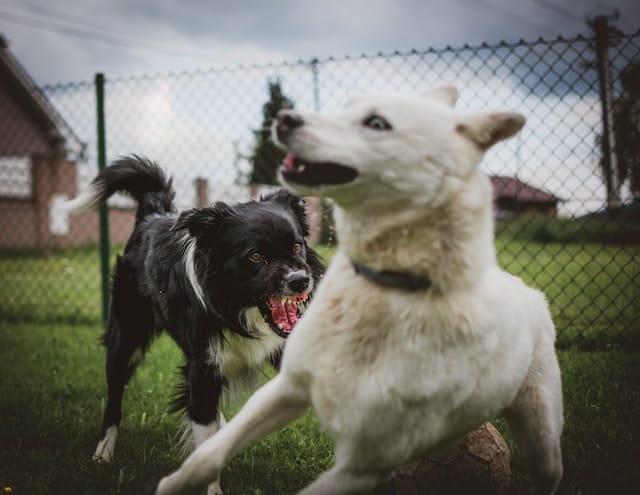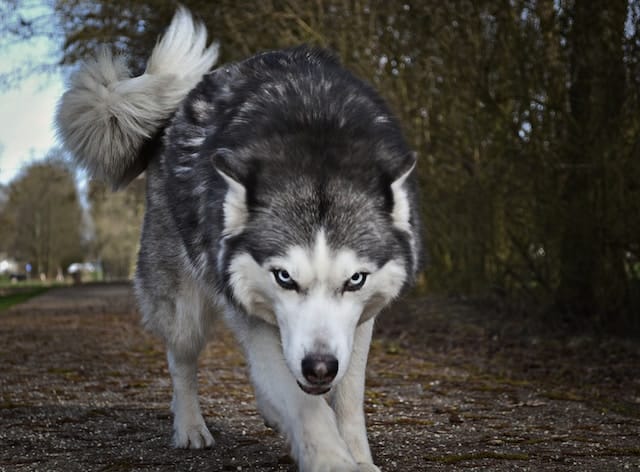
Dogs, often referred to as “man’s best friend,” provide companionship, loyalty, and love. However, not every encounter with a canine companion is a pleasant one. Dealing with an aggressive dog can be a frightening and potentially dangerous experience. While the majority of dogs are friendly and pose no threat, it is essential to be prepared and knowledgeable on how to stay safe when faced with an aggressive dog. In this comprehensive guide, we will delve deeper into various strategies and precautions you can take to protect yourself from aggressive dogs, ensuring you can enjoy a leisurely walk in the park or a visit to a friend’s house without fear.
Understanding Dog Behavior
Before we delve into the practical safety measures, it is crucial to comprehend the factors that can trigger aggression in dogs. A dog’s behavior is shaped by a combination of elements:
Territorial Aggression
Dogs have a strong sense of territoriality, often guarding their home or personal space. When they perceive a stranger encroaching upon their territory, they may exhibit aggression. Be cautious when approaching dogs in unfamiliar environments. Give them space and avoid reaching out to them abruptly.
Fear Aggression
Fearful dogs can resort to aggression as a defense mechanism. This aggression may stem from previous traumatic experiences, anxiety, or an unfamiliar environment. To avoid provoking a fearful dog, refrain from making sudden movements, loud noises, or direct eye contaAllow themnity to acclimate to your presence at their own pace.
Protective Aggression
Dogs are renowned for their loyalty, often fiercely protective of their owners and their possessions. Protective aggression can manifest when a dog perceives a threat to their loved ones or belongings. Approach such dogs with caution and ensure that the owner is present and approves of your interaction.
Social Aggression
In the canine world, dogs have their social hierarchies and interactions. Conflicts among dogs can lead to aggressive behavior. Be vigilant when approaching a group of dogs, and pay attention to their body language. Signs of social aggression can include growling, snarling, or raised hackles.
Recognizing Signs of Aggression
Dogs typically exhibit subtle signs of aggression before resorting to biting or attacking. These signs may not always be obvious, but being able to read these cues can be life-saving:
Body Language
Dogs communicate a great deal through their body language. Raised fur, stiff movements, and a rigid tail can be indicative of aggression. A dog baring its teeth is a clear and direct warning sign. Take these cues seriously and avoid further provocation.
Growling and Barking
Vocalizations such as growling, barking, or snarling are unmistakable signs of aggression. When you hear a dog displaying these behaviors, it is best to back away slowly and avoid any sudden movements.
Avoiding Eye Contact
A dog that is about to display aggression may avoid eye contact with you. If a dog refuses to make eye contact or suddenly averts its gaze, it is a sign that they are uncomfortable. Give them space and do not force an encounter.
Legal Considerations
In the unfortunate event that you are bitten or attacked by an aggressive dog, it is essential to know your legal rights and responsibilities. In most states, dog owners are held liable for any injuries or damages caused by their pets. If you have been attacked by a dog, seek medical attention immediately and report the incident to local authorities. It is also crucial to speak with a dog bite lawyer to understand your legal options and seek compensation for any medical expenses or emotional distress. If the dog was a stray or owned by someone without proper insurance, you may need to pursue legal action to cover your losses. Again, it is essential to consult with a lawyer to understand your rights and options.
Safety Measures
Now that we have explored the fundamentals of dog behavior and recognizing aggression, let’s delve into a comprehensive set of safety measures that you can employ to stay safe when confronted by aggressive dogs:
Stay Calm
Dogs are incredibly perceptive creatures and can sense fear and anxiety. If you encounter an aggressive dog, try your best to remain calm. Avoid making sudden movements or loud noises, as these actions can escalate the situation. Speak in a soothing and gentle tone to convey that you are not a threat. In some cases, remaining calm can even de-escalate the dog’s aggression.
Avoid Eye Contact
As previously mentioned, direct eye contact can be perceived as a challenge or threat by a dog. To minimize the likelihood of provoking aggression, refrain from staring into their eyes. Instead, keep your gaze soft and averted, which signals non-aggression. Dogs often consider this as a sign of submission, leading them to retreat.
Back Away Slowly
In the event that you come face to face with an aggressive dog, resist the instinct to run. Running may trigger a predatory chase response, and you are unlikely to outrun a dog. Instead, back away slowly while maintaining a visual on the dog. Avoid turning your back on the dog, as this can be perceived as an invitation to attack. It is also essential to avoid sudden movements, as these can provoke the dog further.
Don’t Scream or Shout
Yelling or screaming in the presence of an aggressive dog can exacerbate the situation. Dogs have sensitive hearing, and loud noises can agitate them further. It is essential to maintain a quiet and composed demeanor, which can help diffuse tension. However, you may try firmly saying “No” or “Sit” in a calm and assertive tone, as this can help redirect their behavior. In most cases, even though agressive, dogs are able to understand these commands and may comply. You just have to remain as calm as possible and try to use a soothing voice.
Use Obstacles as Shields
If there are objects, such as a bag, a bicycle, or a tree, between you and the aggressive dog, use them as a barrier. This can create a protective barrier that can shield you from potential bites. Dogs are often hesitant to pass these obstacles to attack. You may also use objects, such as umbrellas or jackets, to create a physical barrier between you and the dog. If you have a jacket with you, try to throw it towards the dog while keeping a safe distance, which may distract or confuse them and allow you to escape.
Offer No Threats
Never attempt to pet or feed an aggressive dog, even if you believe it will help. Avoid making sudden movements, gestures, or any actions that could be interpreted as aggressive or threatening. The key is to minimize their perception of you as a threat. Even if you know the dog, approach with caution and ensure that the owner is present.
Carry Dog Repellent Spray
Consider carrying dog repellent spray as part of your safety arsenal when out and about. Dog repellent sprays are formulated to deter aggressive dogs and provide you with a means of self-defense in the event of an aggressive dog encounter. Make sure to read and follow the product instructions to use it effectively and safely.
Report Aggressive Dogs
If you regularly encounter aggressive dogs in your neighborhood, it is your responsibility to report them to local animal control or law enforcement. Reporting aggressive dogs is vital for the safety of your community and can prevent potential incidents in the future. By doing so, you contribute to ensuring the well-being of your neighbors and their pets.

While most dogs are friendly and pose no harm, it is essential to be informed and prepared on how to stay safe when encountering an aggressive dog. Understanding canine behavior, recognizing signs of aggression, and following a comprehensive set of safety measures can empower you to navigate situations with aggressive dogs confidently and protect yourself from potential harm. By staying informed and prepared, you can enjoy your interactions with our furry friends while minimizing risks and ensuring the safety and well-being of both yourself and the dogs you encounter. Remember, knowledge and awareness are the keys to ensuring a harmonious coexistence with our beloved canine companions.


GIPHY App Key not set. Please check settings